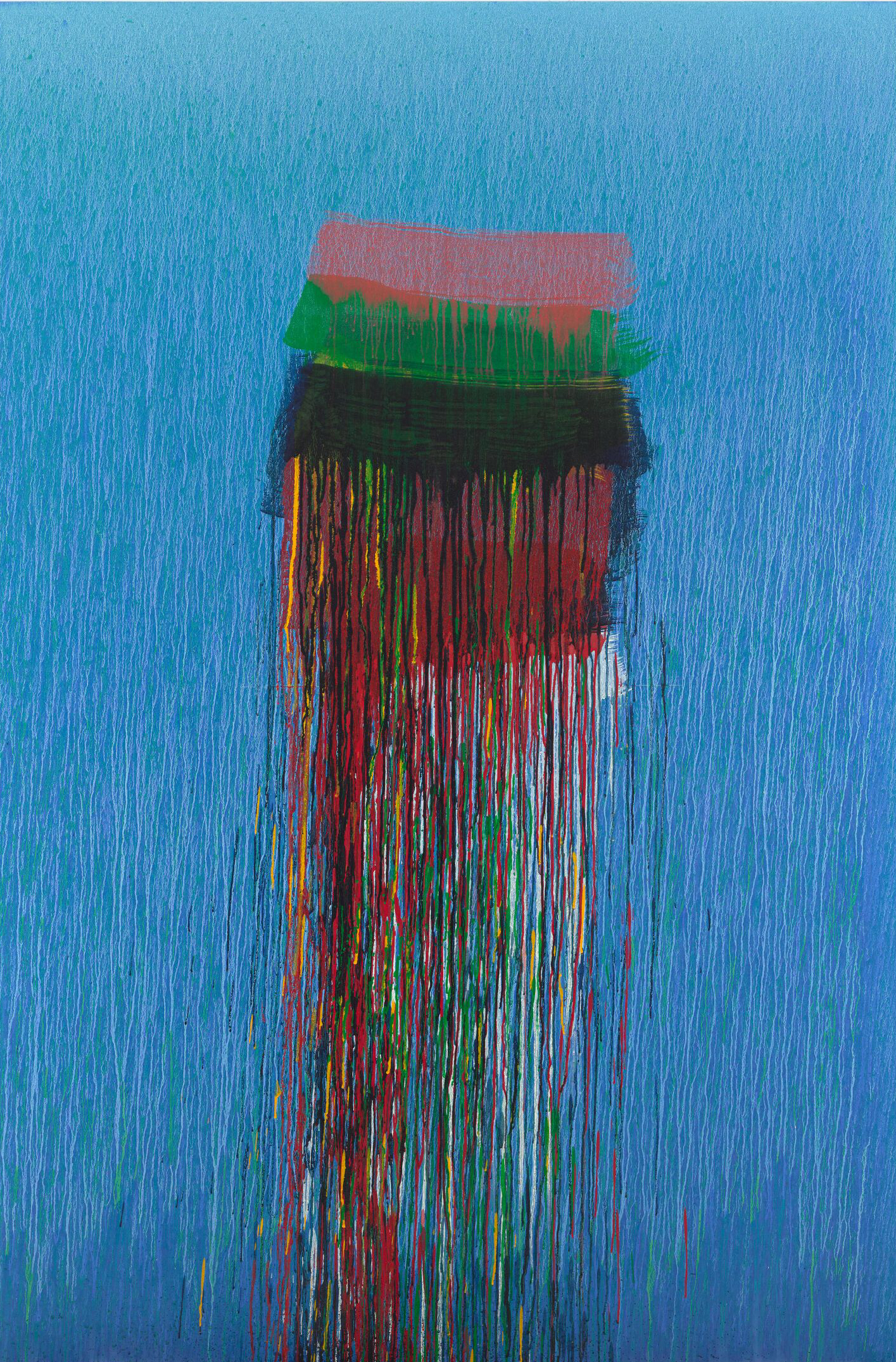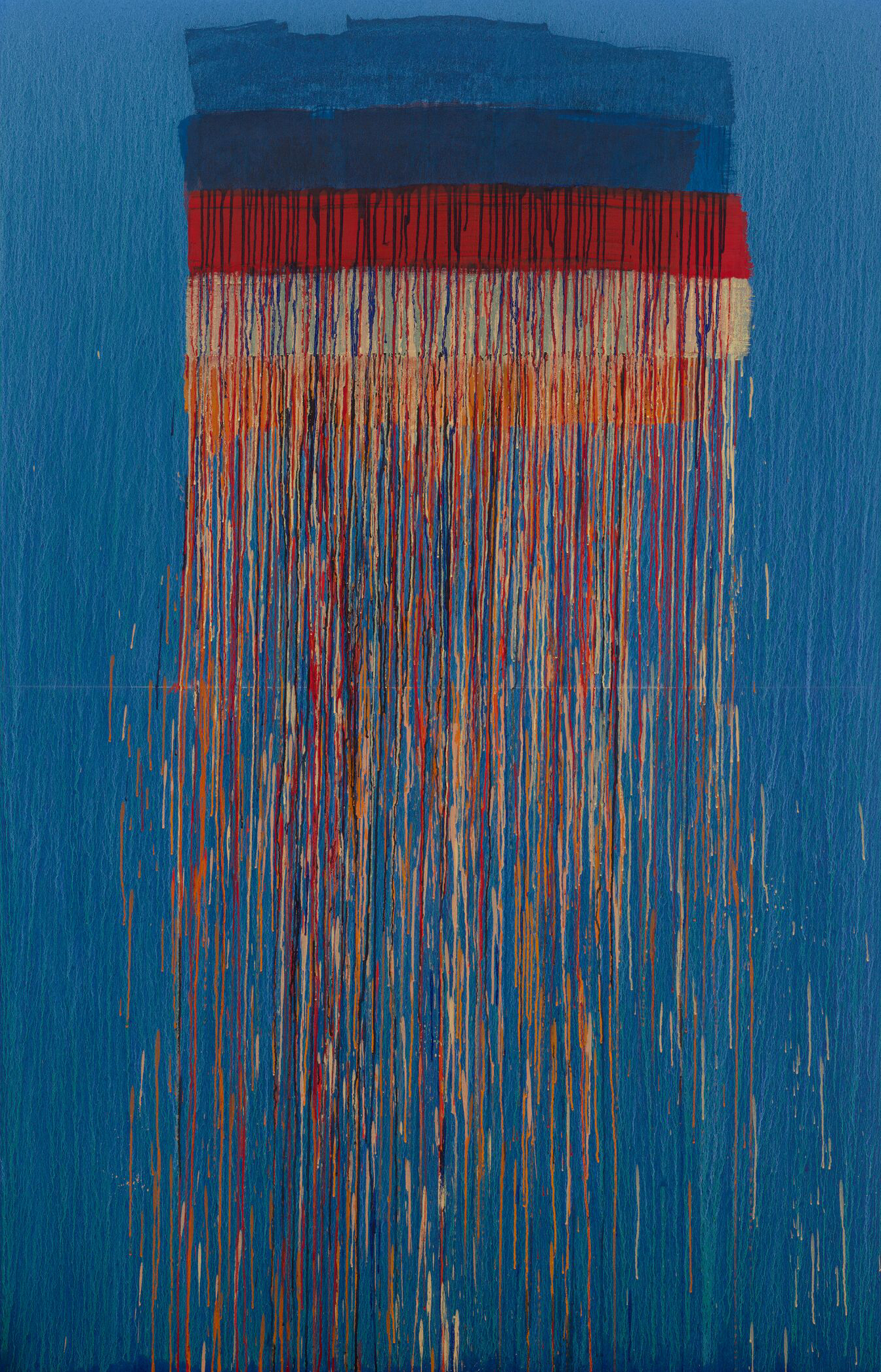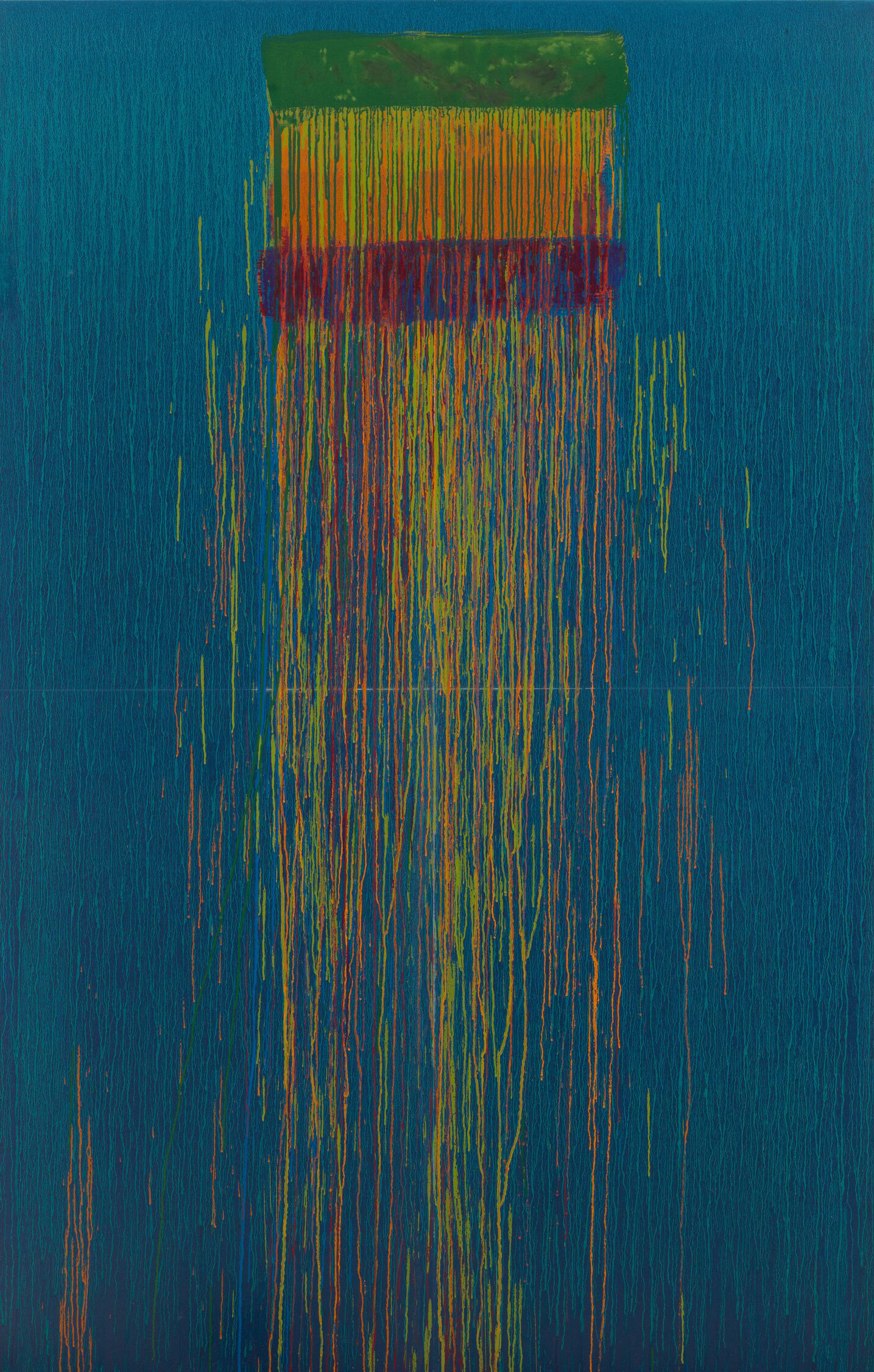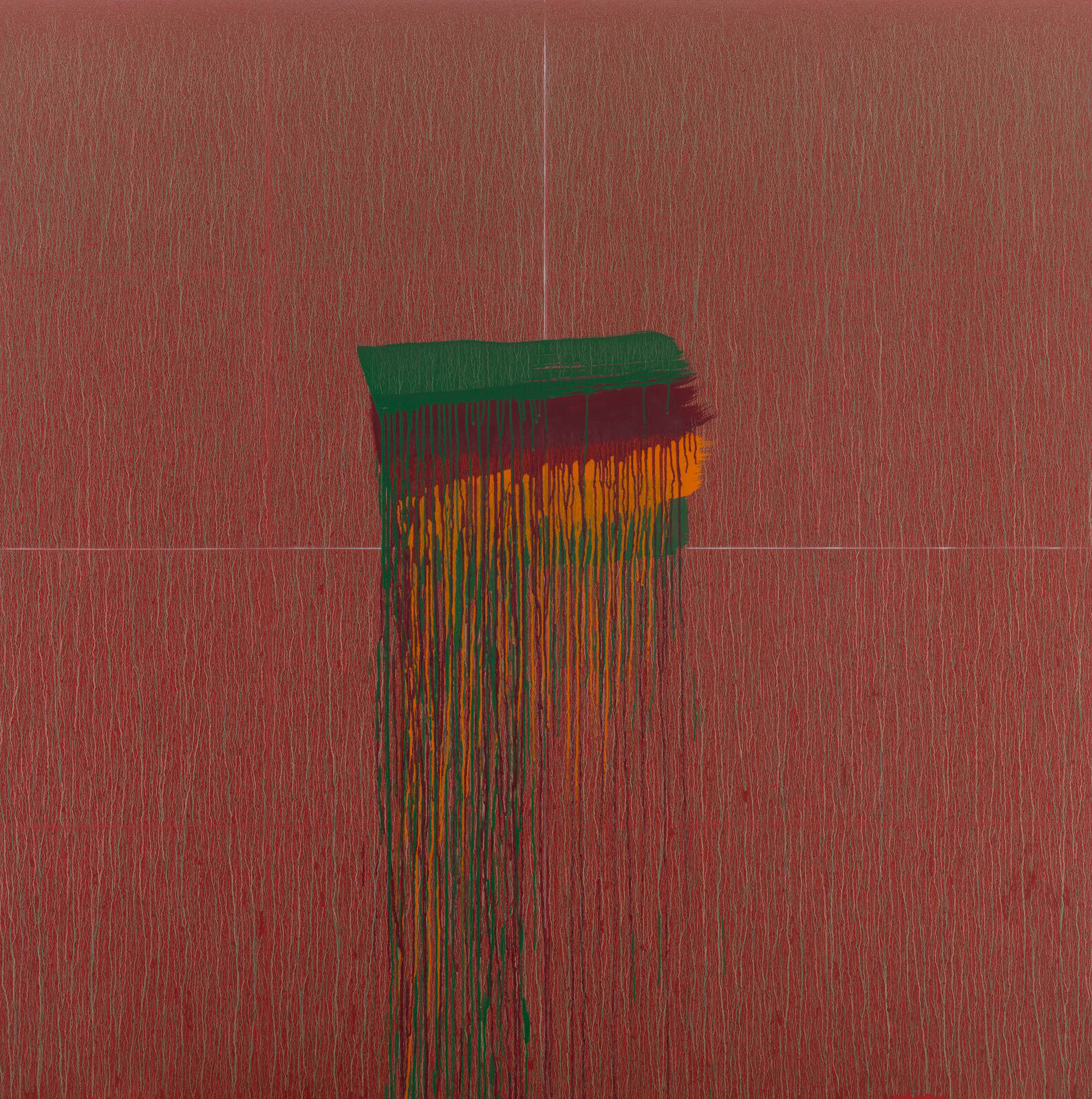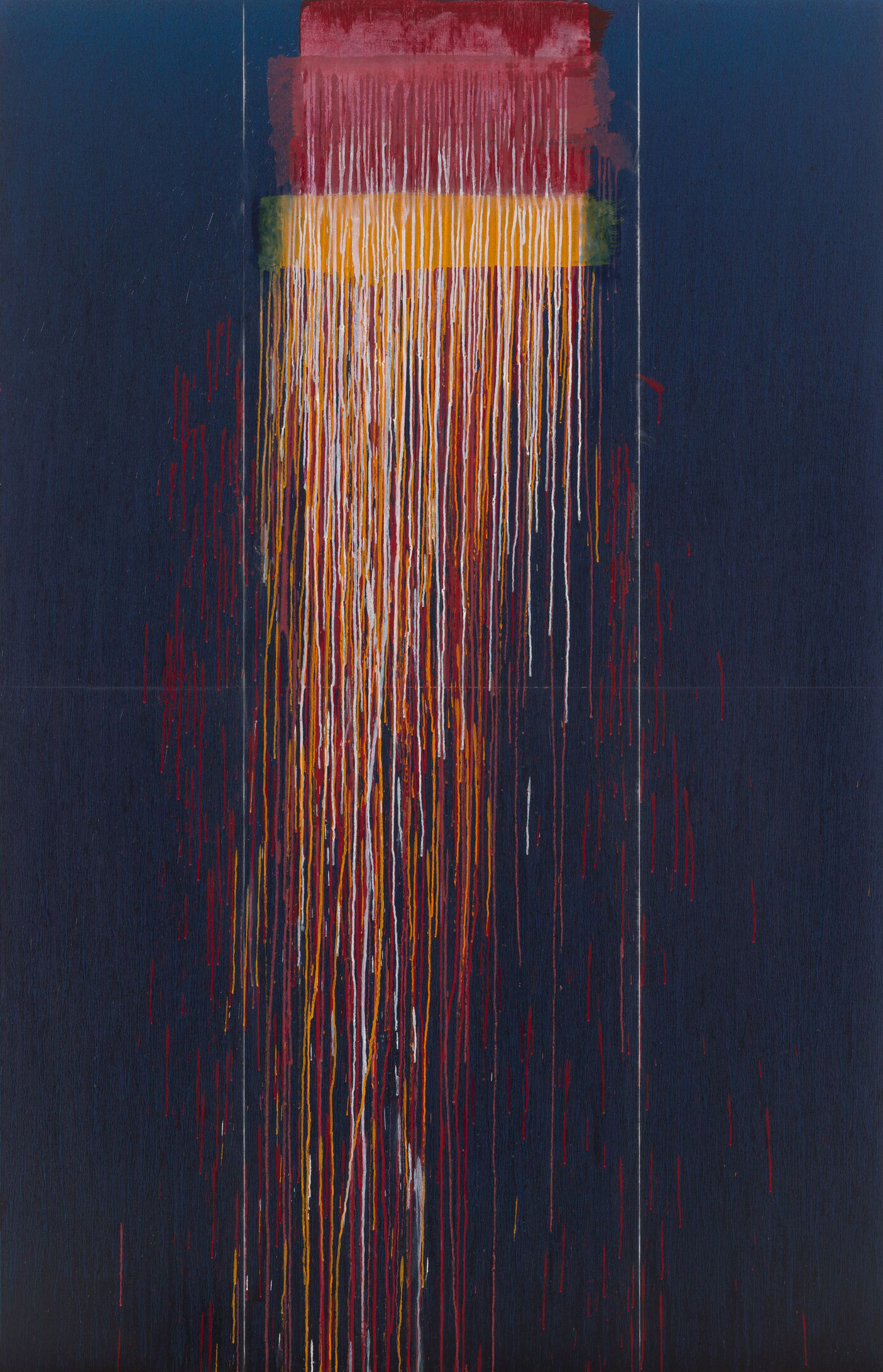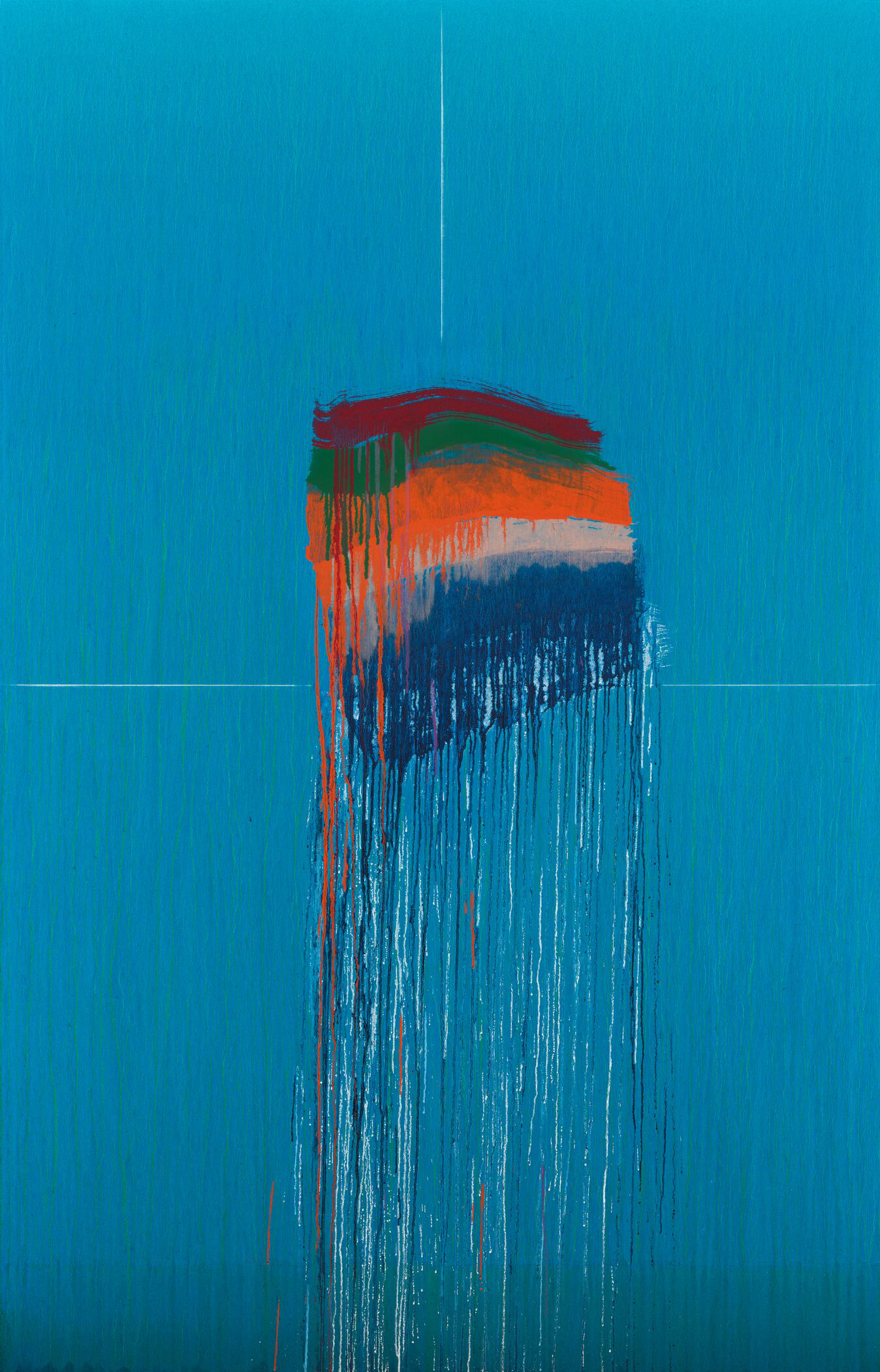Pat Steir
Painted Rain
28 FEBRUARY – 4 MAY 2024
West Hollywood
Renowned for a pioneering approach to painting that synthesizes conceptual art, figuration and abstraction, celebrated American artist Pat Steir unveils a brand new body of work in her first Los Angeles solo exhibition in over 30 years.
Explore the exhibition
‘Painted Rain’ fills the gallery's West Hollywood space with canvases that take as their origin point Steir’s recollections of her time in Los Angeles, in particular, the ocean and sky she experienced while teaching at California Institute of the Arts (CalArts) in the 1970s.

Painted Rain #2
2022 – 23

Painted Rain #3
2022 – 23
With their reverberating tones, the new works on view are united by Steir’s exploration of the color blue, here punctuated by other vivid hues, achieving and obtaining mesmerizing optical effects via the artist’s signature streaming, pouring and layering technique. The luminous results extend and expand Steir’s ongoing Waterfall series wherein she intentionally cedes control and allows the paint to create its own image.
‘The first time I went to LA to teach at CalArts in the 1970s, I remember thinking that the city had endless roads, many, many cars, no place to walk, and shockingly bright sunlight. I saw blue skies and ocean.
I was used to New York light, to seeing all colors muted by a gray screen. CalArts gave me a wonderful studio to use. It had a large window the size of a wall. The light was so bright and saturated I couldn’t see the paint colors I mixed. To counteract this light, I made black paintings with rainbows and color scales outside the picture field. That was 50 years ago. When I think of LA now, I think of the sky and the ocean even more than the light, and that’s the origin of my latest work.’
—Pat Steir

The expressive power of the canvases in ‘Painted Rain’ affirms Steir’s position as one of the most enduringly original contemporary painters whose conceptual practice challenges and transcends the divide between figuration and abstraction. The paintings that will line the walls of West Hollywood’s skylit space together form an undulating current, a river of color and energy that accrues from the rivulets of aqueous pigment cascading in each canvas. Against the delicate and complex verticality of their grounds, thick bands of horizontal paint attach the viewer’s focus to the specific lines and curves—the central points of action in the different paintings.

Friday Circus
2022 – 23
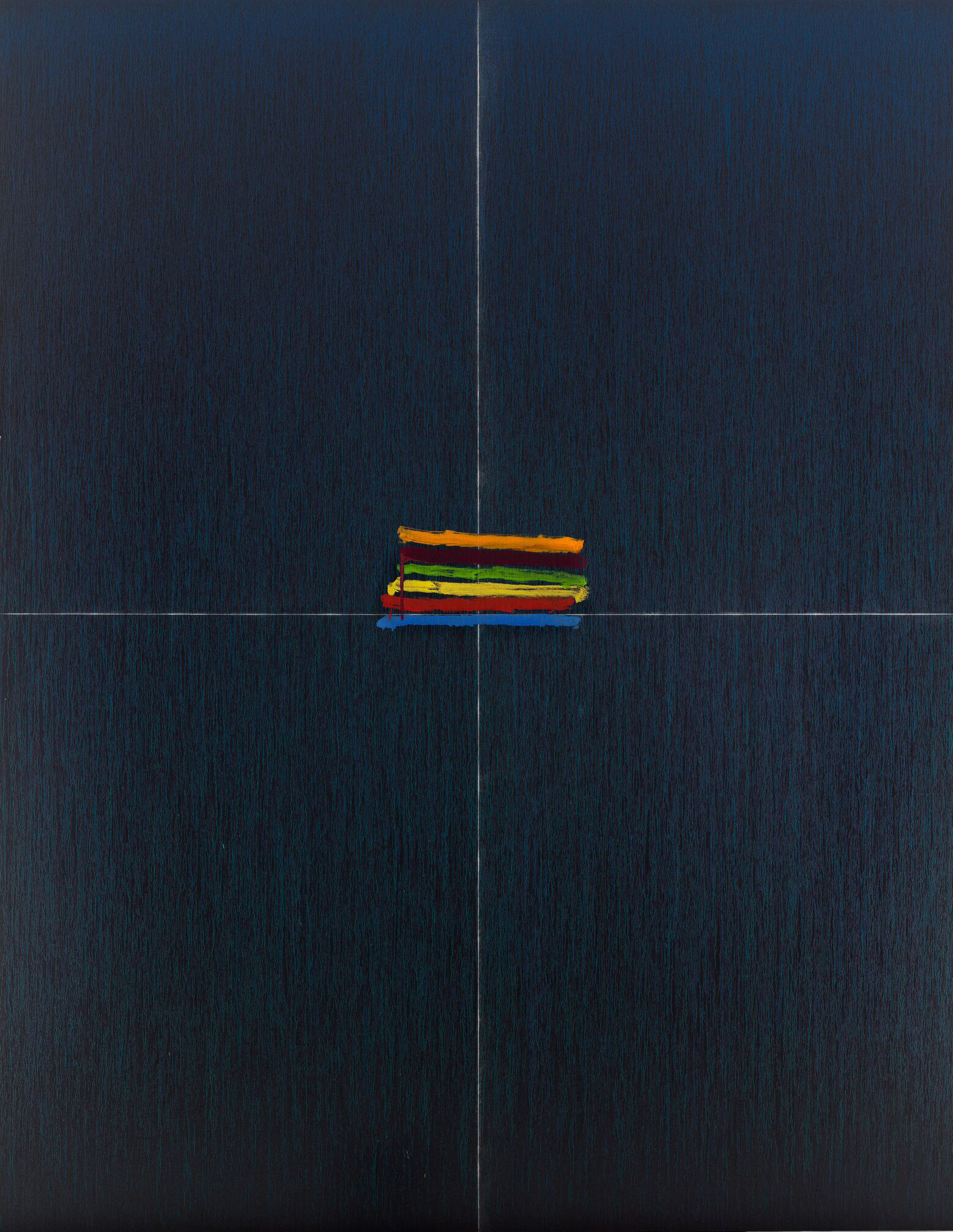
All the Colors
2022 – 23

Steir begins each of her monumental works by employing a Verdaccio underpainting technique first popularized during the Italian Renaissance: she primes her canvases in green, endowing their backgrounds with a distinct glow that radiates into and through the work. On top of this ground, she overlays a grid of chalk lines, forming a faint scaffolding on which she plans her composition. Carefully calibrating the opacity and viscosity of each pigment, Steir then begins her process of pouring, allowing the twinning of gravity and chance to chart out the path of each stream. The results—breathtaking rivers and showers of color—materialize her relentless inquiry of the circular relationship between abstraction and representation.

In ‘Painted Rain #2’ (2022 – 23), lines of purple, orange and green are suspended in a single column that morphs into a torrent of red and white paint, shimmering amid electric streams of a sea-like plane. In ‘Friday Circus’ (2022 – 23) the wavelike hairs of Steir’s brush form slightly rounded and upturned strokes that rest in perfect tension with the spilling red lines below. Perhaps most evocative of the sky among the works on view is ‘Blue’ (2022 – 23). Pale azure variations are finely stacked in the middle of a 9 by 8-foot expanse where a stunning swath of white pours out into a blue mist. Oscillating, yet held together by both gravity and Steir’s soft but determined gridlines, the canvas achieves an astonishing alchemy of control and chaos, of the familiar and the infinite. ‘Blue’ is an enveloping homage to the color from which it takes its title.

Programming
A passionate enthusiast of music, on the occasion of the exhibition Steir collaborated with Trina Basu, a New York-based violinist, improviser, composer and teacher to create a durational soundscape that will engage the works on view, activating the viewer’s experience of the paintings.
For more information on Basu, please visit www.trinabasu.com

Editions
Complementing her paintings on view in West Hollywood, Hauser & Wirth’s Downtown Los Angeles art center will feature a special presentation of Steir’s limited-edition etchings and aquatints from the 1990s and early 2000s, produced in collaboration with San Francisco’s Crown Point Press, highlighting the artist’s longstanding explorations with printmaking and its importance within her practice.

On view in West Hollywood
‘Pat Steir. Painted Rain’ is on view now through 4 May 2024 at Hauser & Wirth West Hollywood. Please visit our location page to plan your visit.
About the Artist
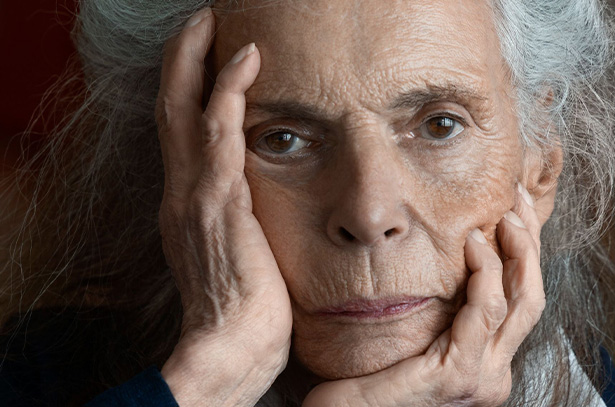
Pat Steir
Among the great innovators of contemporary painting, Pat Steir first came to prominence in the late 1970s and early 1980s for her iconographic canvases and immersive wall drawings. By the late 1980s, her inventive approach to painting—the rigorous pouring technique seen in her Waterfall works, in which she harnessed the forces of gravity and gesture to achieve works of astonishing lyricism—attracted substantial critical acclaim. Informed by a deep engagement with art history and Eastern philosophy, and a passion for artistic advocacy in the both the visual and literary realms, Steir’s storied five-decade career continues to reach new heights through an intrepid commitment to material exploration and experimentation.
Born in Newark, New Jersey in 1938, Steir attended New York’s Pratt Institute from 1956-58, where she took painting classes from Richard Linder and Philip Guston. Steir transferred to Boston University College of Fine Arts where she studied art and philosophy from 1958-60, before returning to Pratt, where she received her BFA in 1962. It was during her days as a student that she first became acquainted with many of the most influential conceptual and minimalist artists of the day, figures that would become Steir’s lifelong friends such as Sol LeWitt, Brice Marden and Lawrence Weiner. Shortly after graduating, Steir was invited to participate in her first group exhibition at The High Museum in Atlanta and only a year later was featured in group shows at the Philadelphia Museum of Art and The Museum of Modern Art, New York. These shows helped position her among the first group of women artists to gain recognition in the male dominated art scene of the time, paving the way for numerous long-term relationships with well-respected international galleries. In the mid-1960s, Steir worked as a freelance illustrator before being offered the role of Art Director at Harper and Row Publishing Company in New York. In the early 1970s she taught illustration at Parsons the New School for Design and then painting at the California Institute of the Arts where Ross Bleckner and David Salle were among her students. Steir simultaneously worked as an editor for Semiotext(e) magazine and was a founding board member of both the Printed Matter bookshop and the landmark feminist journal Heresies.
Steir also became friends with artists Mary Heilmann and Joan Jonas in the early 1970s, participating in an early improvisational film by Jonas and joining Heilmann and artist Joan Snyder in a three-person exhibition at the Paley & Lowe gallery. It was also during this time, at the invitation of Douglas Crimp, that Steir first travelled to New Mexico to visit artist Agnes Martin, a trip she would continue to make over many years until Martin’s death in 2004.
In the mid-1970s Steir showed her first iconic and critically acclaimed series of works—paintings of roses that were then completely crossed out, transcending the divide between figuration and abstraction. She also began to make site-specific wall drawings and room-sized installations. These installations transformed her paintings into a three-dimensional experience formed by light and line, allowing the viewer to step out of their reality and into an illusionary world connected to both nature and the progression of time. As Steir has said, ‘Installation allows the artist to paint out of the painting and into space and the viewer to move from space into a painting—the space where the act of painting takes place is in the imagination of the viewer.’
In the late 1970s, after traveling extensively both in the United States and in Europe, Steir and composer John Cage became good friends while working together at Crown Point Press. His embrace of chaos or randomness and non-intention in creative activity became especially influential on her practice, inspiring her to see new potential for accident and chance in artmaking. In the early 1980s, Steir made her first trip to Japan where she became fascinated by Japanese woodcuts and Chinese literati landscape painting, particularly ancient Chinese Shan shui (mountain water), which evoked nature rather than trying to replicate it. By the late 1980s, Steir began experimenting with the technique that has since come to define her oeuvre, no longer strictly using a brush which allowed her to take herself out of the picture. Subject to the influence of time, the finished work is what gravity and the weight of the paint has made. They are not paintings of landscapes but landscapes in and of themselves, an image that both evokes a waterfall and is a waterfall. As much as Steir’s process embraces chance, she retains complete command over the basic parameters. It is a harmonious collaboration between control and chaos, ‘chance within limitations.’ A remarkable synthesis of conceptualism, minimalism, and abstraction that challenges the postwar American canon, Steir’s practice remains limitless.
Current Exhibitions
1 / 12
